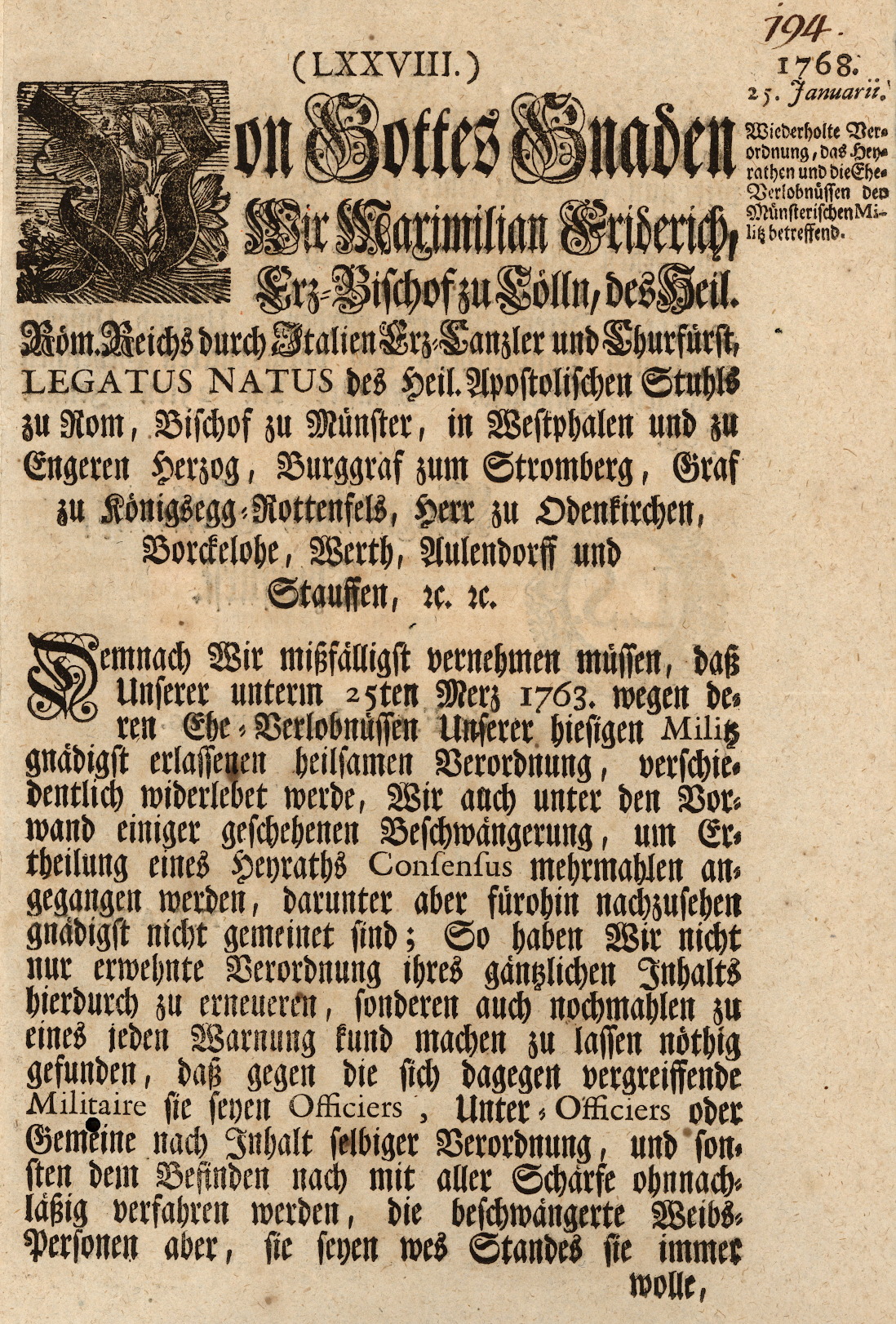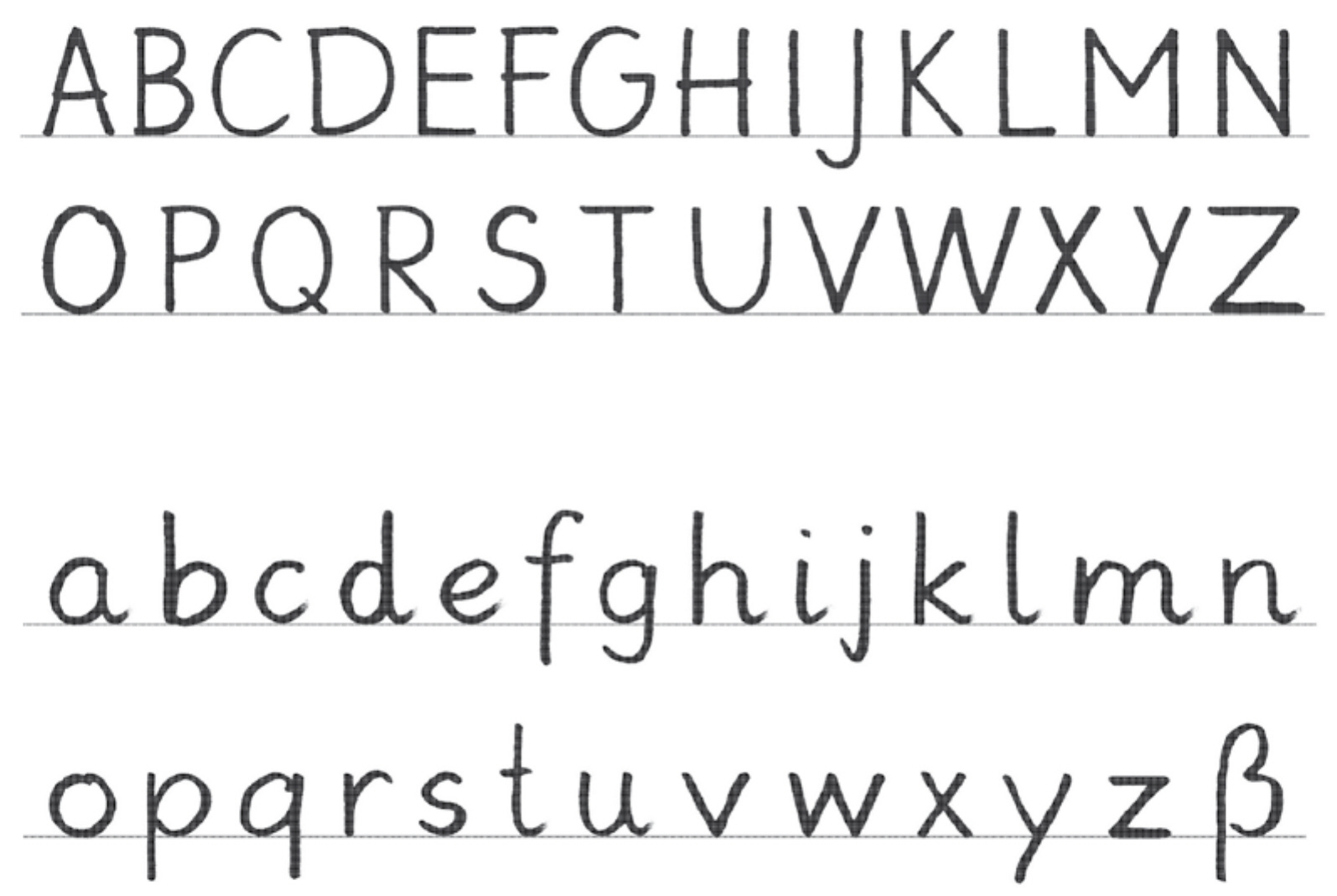|
Kurrent
() is an old form of German-language handwriting based on late medieval cursive writing, also known as ("cursive script"), ("German script"), and ''German cursive''. Over the history of its use into the first part of the 20th century, many individual letters acquired variant forms. German writers used both cursive styles, and Latin cursive, in parallel: Location, contents, and context of the text determined which script style to use. is a modern script based on that is characterized by simplified letters and vertical strokes. It was developed in 1911 and taught in all German schools as the primary script from 1915 until the beginning of January 1941. Then it was replaced with ("normal German handwriting"), which is sometimes referred to as "Latin writing". Lettering examples File:Lessing Kleist-Brief.jpg, Letter from Lessing to Kleist, 14 March 1758 File:Schein und Sein.jpg, Manuscript by Wilhelm Busch (undated, late 19th century) File:Bielsko-Biała Teatr Polski ... [...More Info...] [...Related Items...] OR: [Wikipedia] [Google] [Baidu] |
Sütterlin
(, " script") is the last widely used form of , the historical form of German handwriting script that evolved alongside German blackletter (most notably ') typefaces. Graphic artist Ludwig Sütterlin was commissioned by the Prussian Ministry of Science, Art and Culture (') to create a modern handwriting script in 1911. His handwriting scheme gradually replaced the older cursive scripts that had developed in the 16th century at the same time that letters in books had developed into Fraktur. The name ' is nowadays often used to refer to several similar varieties of old German handwriting, but Sütterlin's own script was taught only from 1915 to 1941 in all German schools. History The ministry had asked for "modern" handwriting scripts to be used in offices and to be taught in school. Sütterlin created two scripts in parallel with the two typefaces that were in use (see Antiqua–Fraktur dispute). The scripts were introduced in Prussia in 1915 and from the 1920s onwards they b ... [...More Info...] [...Related Items...] OR: [Wikipedia] [Google] [Baidu] |
Cursive
Cursive (also known as joined-up writing) is any style of penmanship in which characters are written joined in a flowing manner, generally for the purpose of making writing faster, in contrast to block letters. It varies in functionality and modern-day usage across languages and regions; being used both publicly in artistic and formal documents as well as in private communication. Formal cursive is generally joined, but casual cursive is a combination of joins and pen lifts. The writing style can be further divided as "looped", "italic script, italic", or "connected". The cursive method is used with many alphabets due to infrequent pen lifting which allows increased writing speed. However, more elaborate or ornamental calligraphic styles of writing can be slower to reproduce. In some alphabets, many or all letters in a word are connected, sometimes making a word one single complex stroke. History Cursive is a style of penmanship in which the symbols of the language are writt ... [...More Info...] [...Related Items...] OR: [Wikipedia] [Google] [Baidu] |
Antiqua–Fraktur Dispute
The Antiqua–Fraktur dispute was a typographical dispute in 19th- and early 20th-century Germany. In most European countries, blackletter typefaces like the German Fraktur were displaced with the creation of the Antiqua typefaces in the 15th and 16th centuries. However, in Germany and Austria, the two styles of printing coexisted until the first half of the 20th century. During that time, both styles gained ideological connotations in Germany, which led to long and heated disputes on what was the "correct" typeface to use. The eventual outcome was that the Antiqua-style typefaces prevailed when the Nazi Party chose to put an end to the use of Fraktur in favor of "normal typeface" (). Origin Historically, the dispute originates in the differing use of these two typefaces in most intellectual texts. Whereas Fraktur was preferred for works written in German, for Latin texts the Antiqua-style typefaces were normally used. This extended even to English–German dictionaries; th ... [...More Info...] [...Related Items...] OR: [Wikipedia] [Google] [Baidu] |
German Orthography
German orthography is the orthography used in writing the German language, which is largely phonemic. However, it shows many instances of spellings that are historic or analogous to other spellings rather than phonemic. The pronunciation of almost every word can be derived from its spelling once the spelling rules are known, but the opposite is not generally the case. Today, Standard High German orthography is regulated by the (Council for German Orthography), composed of representatives from most German-speaking countries. Alphabet The modern German alphabet consists of the twenty-six letters of the ISO basic Latin alphabet plus four special letters. Basic alphabet Special letters German has four special letters; three are vowels accented with an umlaut sign () and one is derived from a ligature of (long s) and (; called "ess-zed/zee" or "sharp s"). They have their own names separate from the letters they are based on. * Capital ẞ was declare ... [...More Info...] [...Related Items...] OR: [Wikipedia] [Google] [Baidu] |
Fraktur (script)
Fraktur () is a calligraphic hand of the Latin alphabet and any of several blackletter typefaces derived from this hand. It is designed such that the beginnings and ends of the individual strokes that make up each letter will be clearly visible, and often emphasized; in this way it is often contrasted with the curves of the Antiqua (common) typefaces where the letters are designed to flow and strokes connect together in a continuous fashion. The word "Fraktur" derives from Latin ("a break"), built from , passive participle of ("to break"), which is also the root for the English word "fracture". In non-professional contexts, the term "Fraktur" is sometimes misused to refer to ''all'' blackletter typefaces while Fraktur typefaces do fall under that category, not all blackletter typefaces exhibit the Fraktur characteristics described above. Fraktur is often characterized as "the German typeface", as it remained popular in Germany and much of Eastern Europe far longer than el ... [...More Info...] [...Related Items...] OR: [Wikipedia] [Google] [Baidu] |
German Language
German (, ) is a West Germanic language in the Indo-European language family, mainly spoken in Western Europe, Western and Central Europe. It is the majority and Official language, official (or co-official) language in Germany, Austria, Switzerland, and Liechtenstein. It is also an official language of Luxembourg, German-speaking Community of Belgium, Belgium and the Italian autonomous province of South Tyrol, as well as a recognized national language in Namibia. There are also notable German-speaking communities in other parts of Europe, including: Poland (Upper Silesia), the Czech Republic (North Bohemia), Denmark (South Jutland County, North Schleswig), Slovakia (Krahule), Germans of Romania, Romania, Hungary (Sopron), and France (European Collectivity of Alsace, Alsace). Overseas, sizeable communities of German-speakers are found in the Americas. German is one of the global language system, major languages of the world, with nearly 80 million native speakers and over 130 mi ... [...More Info...] [...Related Items...] OR: [Wikipedia] [Google] [Baidu] |
Blackletter
Blackletter (sometimes black letter or black-letter), also known as Gothic script, Gothic minuscule or Gothic type, was a script used throughout Western Europe from approximately 1150 until the 17th century. It continued to be commonly used for Danish, Norwegian, and Swedish until the 1870s, Finnish until the turn of the 20th century, Estonian and Latvian until the 1930s, and for the German language until the 1940s, when Adolf Hitler officially Antiqua–Fraktur dispute, discontinued it in 1941. Fraktur is a notable script of this type, and sometimes the entire group of blackletter faces is referred to as Fraktur. Blackletter is sometimes referred to as Old English, but it is not to be confused with the Old English language, which predates blackletter by many centuries and was written in the insular script or in Futhorc. Along with Italic type and Roman type, blackletter served as one of the major typefaces in the history of Western typography. Origins Carolingian minuscule wa ... [...More Info...] [...Related Items...] OR: [Wikipedia] [Google] [Baidu] |
Grundschrift
Grundschrift (''basic handwriting'', literally ''ground script'') is a simplified form of handwriting adopted by Hamburg schools, and it is currently endorsed by the German National Primary Schoolteachers' Union. If nationally adopted, it would replace the three different German cursives currently being taught in schools: the Lateinische Ausgangsschrift (introduced in 1953), the Schulausgangsschrift (1968), and the Vereinfachte Ausgangsschrift (1969), providing a standardized system of handwriting in German school systems. Grundschrift letters are written separately as block letters as opposed to cursive script, in which letters are conjoined together in a flowing motion. See also * Kurrent * Sütterlin (, " script") is the last widely used form of , the historical form of German handwriting script that evolved alongside German blackletter (most notably ') typefaces. Graphic artist Ludwig Sütterlin was commissioned by the Prussian Ministry ... References {{Eur ... [...More Info...] [...Related Items...] OR: [Wikipedia] [Google] [Baidu] |
Deutsche Kurrentschrift
Deutsch ( , ) or Deutsche ( , ) may refer to: * or : the German language or in particular Standard German, spoken in central European countries and other places *Old High German language refers to Deutsch as a way to define the primary characteristic of the people of the land with importance given to masculine strength - Dhaithya in Samskrutham (aka Sanskrit) meaning a physically very strong man, who is not concerned about his actions and their consequences that use his strength, as he is blinded by the temporary power he possesses at the moment. *: Germans, as a weak masculine, feminine, or plural demonym * ''Deutsch'' (word), originally referring to the Germanic vernaculars of the Early Middle Ages Businesses and organisations *André Deutsch, an imprint of Carlton Publishing Group * Deutsch Inc., a former American advertising agency that split in 2020 into: **Deutsch NY, a New York City-based advertising agency * Deutsche Aerospace AG *Deutsche Akademie, a cultural organisat ... [...More Info...] [...Related Items...] OR: [Wikipedia] [Google] [Baidu] |
Wilhelm Busch
Heinrich Christian Wilhelm Busch (14 April 1832 – 9 January 1908) was a German humorist, poet, illustrator, and painter. He published wildly innovative illustrated tales that remain influential to this day. Busch drew on the tropes of folk humour as well as a profound knowledge of German literature and art to satirize contemporary life, any kind of piety, Catholicism, Philistinism, religious morality, bigotry, and moral uplift. His mastery of drawing and verse became deeply influential for future generations of comic artists and vernacular poets. Among many notable influences, '' The Katzenjammer Kids'' was inspired by Busch's ''Max and Moritz''. Today, the Wilhelm Busch Prize and the Wilhelm Busch Museum help maintain his legacy. The 175th anniversary of his birth in 2007 was celebrated throughout Germany. Busch remains one of the most influential poets and artists in Western Europe, being called the "Forefather of Comics". Family background Johann Georg Kleine, ... [...More Info...] [...Related Items...] OR: [Wikipedia] [Google] [Baidu] |




